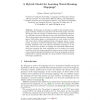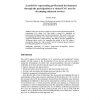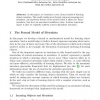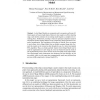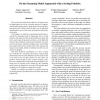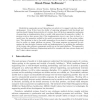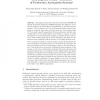EELC
2006
14 years 3 months ago
2006
Abstract. In this paper we introduce a model for the simulation of language evolution, which is incorporated in the New Ties project. The New Ties project aims at evolving a cultur...
ECTEL
2006
Springer
14 years 3 months ago
2006
Springer
This paper presents a model of professional development through the participation in a virtual CoP. This model is rooted in a definition of professional development and of professi...
ECTEL
2006
Springer
14 years 3 months ago
2006
Springer
In this paper, we introduce a new, formal model of learning object metadata. The model enables more formal, rigorous reasoning over metadata. An important feature of the model is t...
ECMDAFA
2006
Springer
14 years 3 months ago
2006
Springer
In MDE, model transformations should be efficiently tested so that it may be used and reused safely. Mutation analysis is an efficient technique to evaluate the quality of test dat...
DAGM
2006
Springer
14 years 3 months ago
2006
Springer
Abstract. Active Shape Models are commonly used to recognize and locate different aspects of known rigid objects. However, they require an off-line learning stage, such that the ex...
FOCS
2004
IEEE
14 years 3 months ago
2004
IEEE
The need to deal with massive data sets in many practical applications has led to a growing interest in computational models appropriate for large inputs. The most important quali...
FDL
2004
IEEE
14 years 3 months ago
2004
IEEE
Model-driven approaches proved themselves not suited yet to support real-time software development. Even if they have the ability of capturing adequately both functional and non-f...
CLOR
2006
14 years 3 months ago
2006
We present a "parts and structure" model for object category recognition that can be learnt efficiently and in a weakly-supervised manner: the model is learnt from examp...
DFG
2004
Springer
14 years 3 months ago
2004
Springer
This paper presents the real-time model checker RAVEN and related theoretical background. RAVEN augments the efficiency of traditional symbolic model checking with possibilities to...
CAISE
2006
Springer
14 years 3 months ago
2006
Springer
Flexibility of business processes requires a modeling language that can distinguish between the stable and flexible parts of a business process. Starting from a general model of bu...
